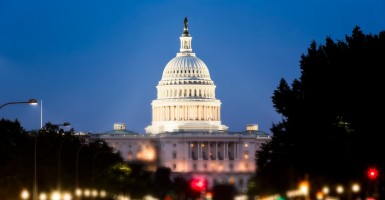The burden of federal regulation on the U.S. economy has often been compared to a tax. Unlike ordinary taxation, however, these regulatory burdens are not accounted for in the federal budget.
Unfortunately, the vision is as unattainable as it is tempting.
Some members of Congress would like to create a “regulatory budget” specifically to limit the costs of red tape. Sen. Mike Lee, R-Utah, for instance, has argued here that such a budget “would give regulatory agencies … an incentive to make their regulations cost-effective.”
The idea has a common sense appeal to it. Regulatory decision making—say proponents—would be governed by incentives created by budget allocations, seamlessly leading regulators to limit and prioritize rule-making.
Unfortunately, the vision is as unattainable as it is tempting.
Estimates of regulatory costs—on which any budget would have to rely—are notoriously imprecise. Rather than well-balanced incentives, the unreliable and incomplete estimates would skew decision-making away from the correct priorities. Moreover, rules with real but intangible costs—such as violations of religious liberty—would actually be free to regulators.
Worse, such a system would be massively gamed by political appointees and bureaucrats intent on pursuing their own regulatory agendas.
Such gaming would quickly overwhelm the constraints imposed by a budget. For instance, by inflating expected costs for proposed rules when budget levels are set, and low-balling those costs when those rules are finalized, regulators low-ball estimates by agencies that would create false savings that regulators would spend on even more new regulations.
This would be less of a concern if the regulatory budget was simply one check among many. But implementing a regulatory budget would shift focus from other necessary and more effective reforms. The proposed budget mechanism would also be seen as reducing the need for vigilant oversight of rule-making.
This is a misplaced hope, and one that would be costly to consumers and businesses already buckling under the weight of excessive regulation.
Moreover, if a system of regulatory budgeting were instituted, it is unclear whether Congress would have the political will to enforce it. Members certainly don’t abide by the fiscal budget now. And it is hard to imagine lawmakers declining to authorize a new rule that regulators say would save lives at little cost, based only on—ultimately artificial—budget allocations.
Instead, legislators likely would quickly provide “emergency” resources to implement the rule, ignoring budget limits.
The regulatory system simply will not work on autopilot. Decisions still must be made on the merits of each proposal, and political will summoned to rein in regulatory excesses.
The principle behind regulatory budgeting seems straightforward. But in practice it suffers from fundamental defects. And if a regulatory budget system is pursued, it would shift attention from more effective reforms.
The goals of a regulatory budget—including a focus on the cost of rules and greater congressional accountability—are entirely legitimate. They can and should be pursued through reforms that will actually deliver results.
























